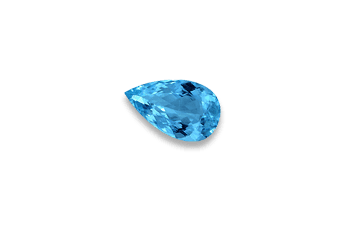AQUAMARINE
Aquamarine is one of the most famous members of the beryl gem species, along with emerald. Other notable varieties are pink morganite and golden beryl. Beryl is a beryllium, aluminum silicate. With a particular type of iron impurity, the resulting hue will include varying tones and intensities of light blue, often with a greenish component. This range of colors invites comparisons to the sea. Indeed, the gem's name comes from the Latin for seawater. Aquamarine crystals have the potential to be very large and virtually free of inclusions. In 1910, a crystal weighing over 110 kg was found in Brazil. Although Brazil has been an important producer over the years, its aquamarines have a tendency to be less saturated than those from a few other countries, particularly in smaller sizes. They are also more commonly heat treated to remove their greenish component. African stones from countries such as Zambia, Zimbabwe, Nigeria and Mozambique can be more saturated and do not respond to heat because their greenish color is often, at least in part, the result of a chromium impurity. Afghanistan and Pakistan are two other important sources.

Image Above: Aquamarine is more durable than its brother the emerald. With a hardness of 7.5 to 8 on the Moh's hardness scale and good toughness and stability, it stands up to wear quite well. Using an ultrasonic cleaner or steam on this gem is usually safe unless there are liquid inclusions present. In this case, warm soapy water is effective. Aquamarine is the birthstone for the month of March.

